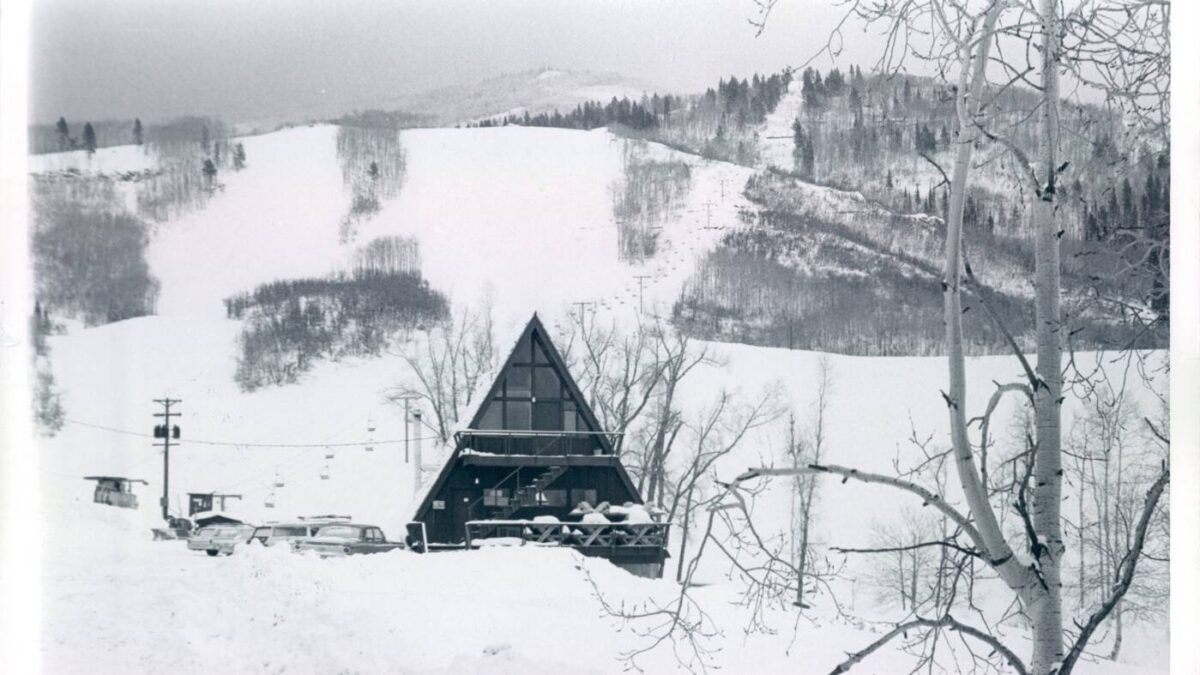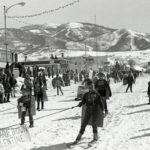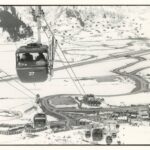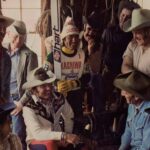Steamboat By The Decades: The ’60s
Written by Eugene Buchanan
While the ‘60s might have been an era of counterculture grooviness and free love in places like Haight-Ashbury, in Steamboat Springs, Colorado, it was all about getting things done on a peak rising above town called Storm Mountain. The idea for the ski area came from ranchers and resort pioneers Jim Temple and John Fetcher, who “thought there’d be more money in the people business than cows.”
“My brother and I bought a cattle ranch here in 1949, thinking anyone could be a farmer,” said Fetcher of the lightbulb for the ski area. “Little did we know. I didn’t know which end of a cow got up first, and certainly didn’t learn horseshoeing at Harvard.”
At the time, Steamboat “was a sleepy little cow town,” with its lone ski area at Howelsen Hill running a boat tow to get people up the mountain. Struggling in the ranching business, Fetcher decided to try his cowhand in the ski business. “My brother and his family had to leave, but I loved skiing and was asked to join the group develop Storm Mountain Ski Area,” he said.
Temple, a rancher from the Little Snake River valley, started his feasibility study in 1955 after spending a few years skiing in Sun Valley, Idaho. He drove a Jeep to the summit with Gates Gooding, horsebacked up to the top of the mountain with Forest Service Supervisor Paul Hauk, and even organized snowcat trips, pulling Winter Sports Club skiers from Rabbit Ears Pass to the top of the mountain to ski to all the way down to the valley floor.
For his part, ever the ranch hand Fetcher drove to California to pick up the lift’s bull wheels and helped build the resort’s first chairlift in 1962. The Storm Mountain Ski Area opened with the Storm Mountain Express double chairlift and an A-frame warming house on January 12, 1963, with a whopping 40 inches of new snow as a tiding of things to come. Perhaps the temperatures kept customers at bay (it was also a balmy 25 degrees below zero that day), but total lift tickets sales still tallied $13.75. “The lift didn’t even have an attendant,” Fetcher recalled. “You had to get on and off by yourself. And we mortgaged our cattle to meet the payroll.”
A year later,Billy Kidd, who would soon become Steamboat’s Director of Skiing, won the silver medal in slalom at the 1964 Innsbruck Olympics, joining Jimmie Heuga (bronze) as the first American men to win Olympic medals in Alpine skiing. In his race, Kidd used a pair of 207cm, wooden Kastle slalom skis, leather boots and bear-trap bindings with “longthongs,” a six-foot-long leather strap wrapped around their boots, to get to the podium. “That was the last year we used wooden skis in the Olympics,” says Kidd, who is still with the resort nearly 60 years later. “They were so stiff you could barely bend them. Two years later we had fiberglass skis, plastic boots and release bindings, which was a whole new world.” Back then, he adds, “the release factor was when the screws pulled out of the ski.”
Later that year, however, tragedy struck when local racing legend and Olympian Buddy Werner—one of three Olympic skiing children of Ed and Hazie Werner, along with Skeeter and Loris—was killed in an avalanche while filming a commercial in Switzerland, just three weeks after retiring from racing. The next year, Storm Mountain was renamed Mount Werner in Buddy’s honor (now skiers tap his statue’s head at the top of the mountain for good luck), and in 1968, Buddy’s Run was named by fellow Olympian Gordon Wren.
As word got out and the resort grew, more lifts were installed as the decade progressed , including Thunderhead and Four Points, the first chairlift in the country to feature bullwheel loading and unloading. In another milestone for the resort, the Thunderhead Restaurant opened at mid-mountain. Then the end of the decade saw even more money invested in the resort, with new owner LTV Recreational Development Inc. beginning a $10 million development at the ski area’s base. And, even more importantly for died-in-the-wool skiers like Temple, Fetcher, Kidd and Werner, the run White Out was cut, which is still many locals’ favorite run on the mountain.





